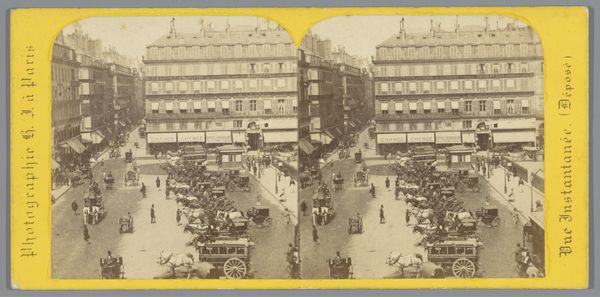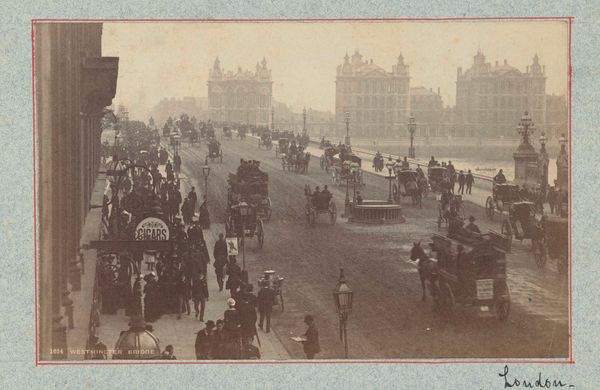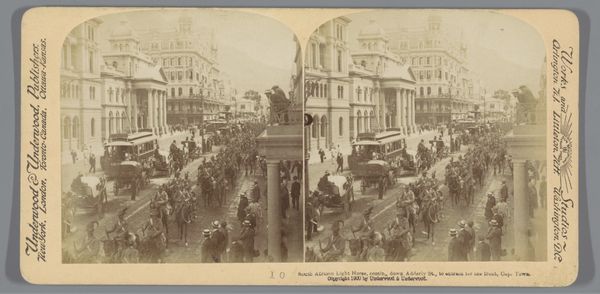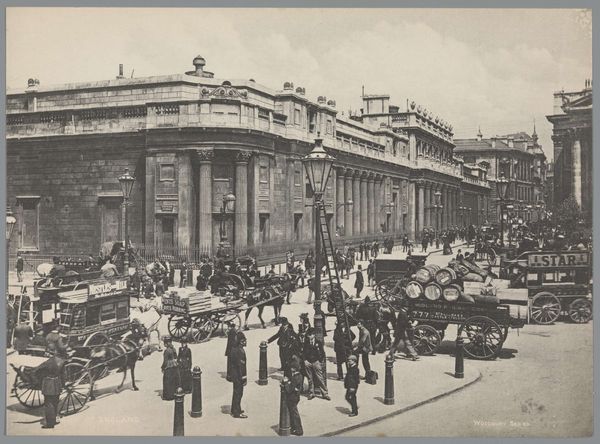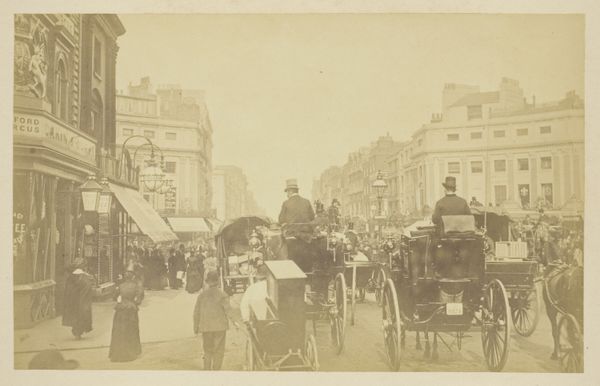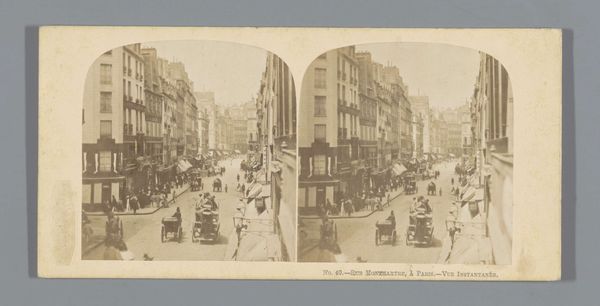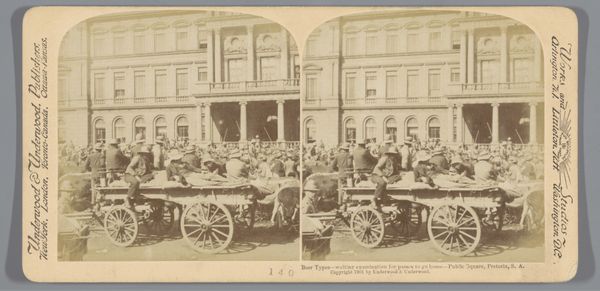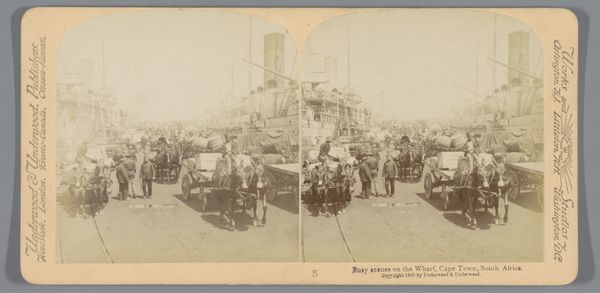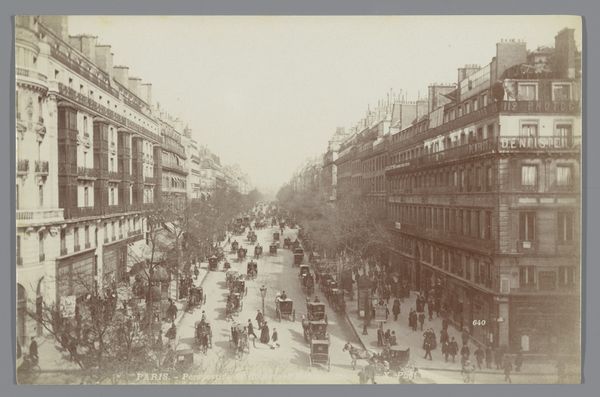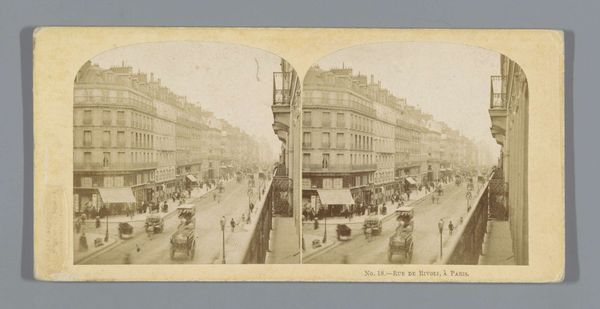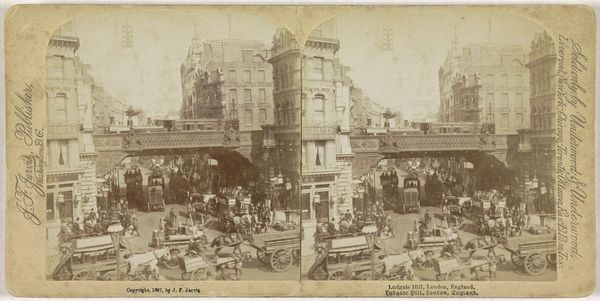
Gezicht op Bank junction te Londen tijdens de viering van het diamanten jubileum van koningin Victoria 1897
0:00
0:00
print, photography, gelatin-silver-print, albumen-print
# print
#
photography
#
gelatin-silver-print
#
cityscape
#
albumen-print
#
building
Dimensions: height 85 mm, width 170 mm
Copyright: Rijks Museum: Open Domain
Editor: This is a gelatin silver print from 1897 by Underwood & Underwood, showing Bank Junction in London during Queen Victoria's Diamond Jubilee. It feels almost overwhelmingly crowded! So much visual detail packed into the frame. What captures your attention most in this photograph? Curator: The print speaks volumes about the staging of imperial power. Mass celebrations like Queen Victoria’s Jubilee were carefully orchestrated events designed to reinforce national identity and project an image of Britain’s global dominance. Note the architecture itself - classical columns, grand facades… How does that architectural style play into this narrative? Editor: I guess it’s meant to convey stability and power. Almost like saying “We are building an empire that will last.” Curator: Exactly! The buildings physically embody imperial ambitions, and the carefully controlled procession through them reinforces the natural hierarchy. Who is included in the celebration, and perhaps more importantly, who is excluded? Editor: Hmm, it’s hard to tell individual faces. It seems like wealthier individuals might be in carriages, but there are lots of workers visible on top of the commercial vans… Was that part of some broader effort to make the lower classes feel included? Curator: Potentially. But also consider that those workers are literally advertising products, even in the midst of a national celebration. The lines between patriotism, commerce, and social class become deliberately blurred, I think. How does that impact our understanding of the image today? Editor: I hadn’t really considered how many layers of meaning could be embedded in one image, especially regarding things like nationalism and social structures of the period. Curator: Exactly. Photographs like this served to document history, but they also shaped how that history was understood by different audiences, both then and now. It really illustrates the intertwined public and political nature of photography during this time.
Comments
No comments
Be the first to comment and join the conversation on the ultimate creative platform.
